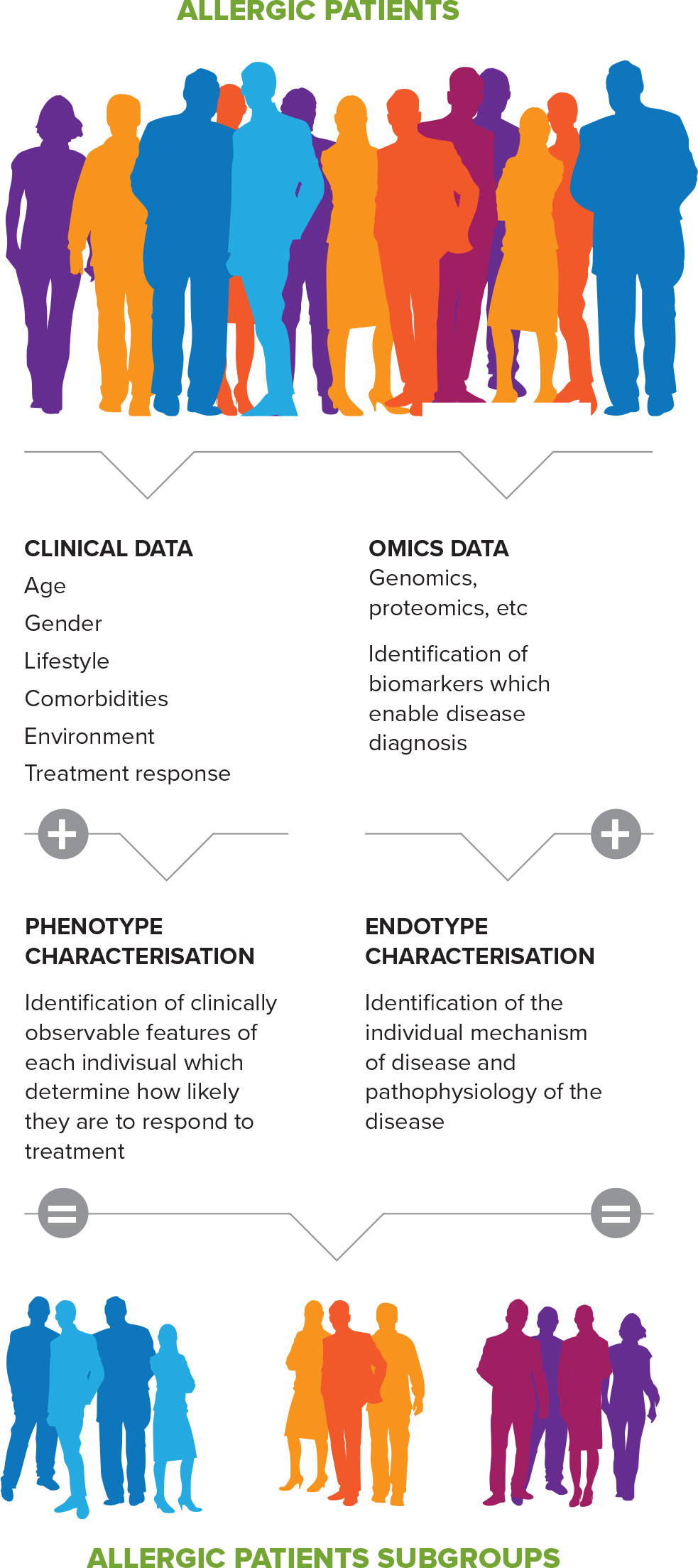Precision medicine

Fulfilling our promise to patients and healthcare
professionals
Precision medicine consists in using the individual characteristics and mechanism of disease of each patient to determine which treatment is the most likely to maximise treatment effectiveness, while reducing costs both for patients and healthcare authorities.
At Stallergenes Greer, we believe that patients deserve an allergen immunotherapy solution that is tailored to their needs and profile. We are pushing the boundaries of R&D to fully leverage the potential of precision medicine for the benefit of people with allergies. One of the ways we are doing this is by characterising the molecular immunological responses of each patient and exploring molecular diagnostics to identify, with increased precision, the allergens to which each patient is specifically sensitive.
The development of new disciplines and skills are making it possible to specify the diagnosis of respiratory allergy for each individual. Molecular diagnostics provide additional information to guide the prescription and composition of allergen immunotherapy treatments.
Precise personalised allergen immunotherapy solutions
Because each patient presents a unique immunologic profile, we believe that one solution doesn’t fit all. Stallergenes Greer’s approach allows healthcare professionals to create, along with first-line treatments such as allergen eviction and symptomatic medication, a tailored approach that best addresses each individual’s treatments needs.

Precision medicine: a combination of clinical observation and advanced diagnostics
Professor Philippe Gevaert,
MD, PhD
ENT specialist, Department of Otorhinolaryngology, Ghent University Hospital (Belgium)
Read more...
“For me, personalised medicine is a combination of clinical observation and advanced diagnostics. I am an ENT surgeon, but I do quite a lot of research in allergy in the nose. I have witnessed, for more than 20 years, that component resolved diagnosis alone – measuring just one element or multiplying omics -can't give us the answer. As physicians, we know that patients often present combined problems. For example, as an ENT surgeon, when I study a patient's nose, I can see that the patient has an obstruction of the nose because of a house dust mite allergy, but the patient can also have sinusitis or a septal deviation. And there might be more problems than just those.
If we only focus on omics and advanced diagnostics, in my opinion, we are missing something. Thanks to artificial intelligence and big data, we can combine omics and advanced diagnostics with what we find in a medical file. We observe how important clinical findings and comorbidities are for diagnosis and predicting outcomes. As a physician, I think this combination is both the foundation for personalised medicine and the best solution for the patient.”
